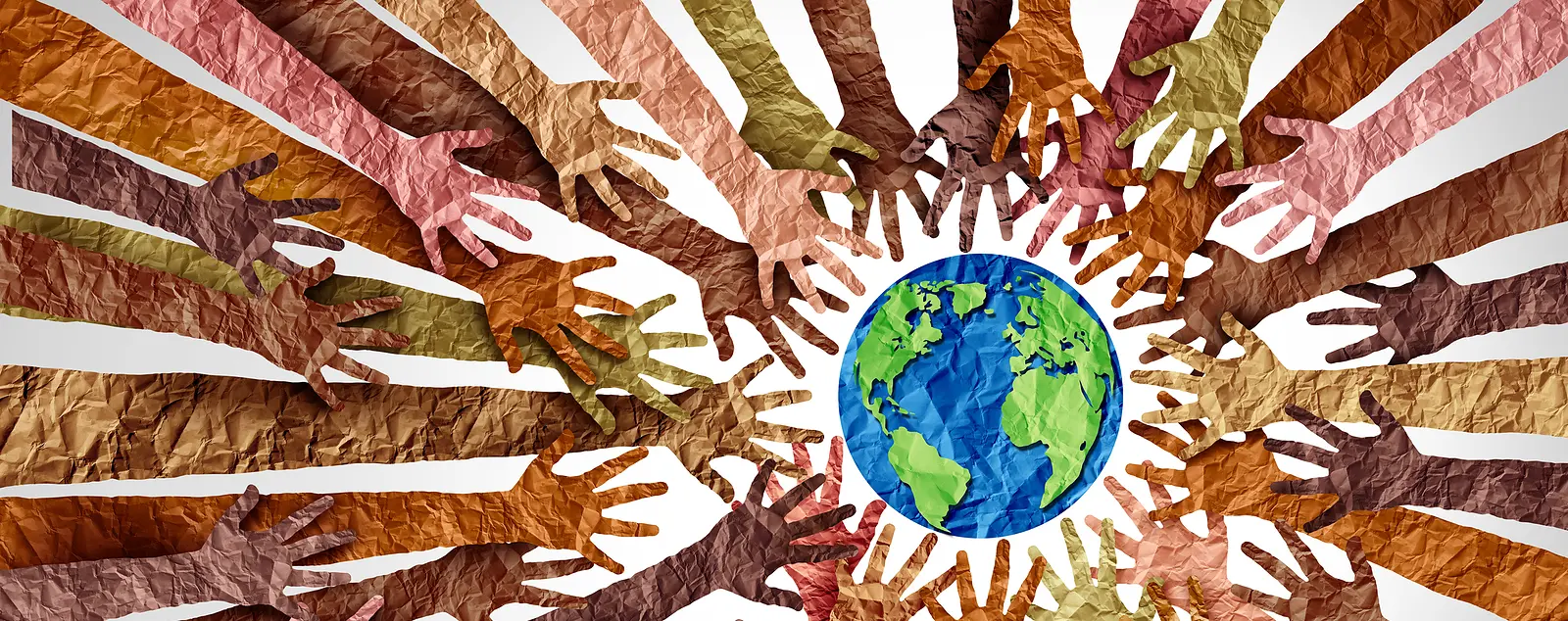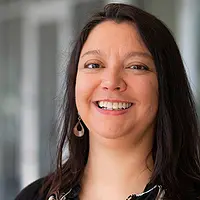
Environmental justice has become a routine topic of conversation in the news. But what does it mean? And how can you implement environmental justice and put it into practice? RTI experts Kibri Hutchison Everett and Jennifer Park have answered five questions to raise awareness of key issues surrounding environmental justice. Kibri currently leads a project focused on assessing environmental injustices affecting local communities, and Jennifer works within international development specializing in climate equity and biodiversity conservation.
In a few sentences, what does environmental justice (EJ) mean to you?
Kibri: Environmental justice involves fighting against the people, policies, and corporations who targeted and discriminated against people of color and underserved communities by treating them unfairly and polluting the spaces where they live and work. Environmental justice means that communities who have been harmed through environmentally racist practices are recognized and the systems that perpetuated the injustices are dismantled. To pursue environmental justice is to attempt to right the wrongs of environmental racism.
Jennifer: The same as in the domestic space, international environmental justice concerns whether people in countries outside the U.S. have rights to their natural resources, and whether those rights are enforced.
Developing countries are most vulnerable to the changing climate and rising temperatures. This results in some of the world’s most vulnerable groups bearing the brunt of the climate crisis. Through my work leading USAID-funded environmental conservation projects, I’ve seen firsthand how important it is for people to have rights to their local natural resources and that those rights are enforced and protected. To me, a key aspect of environmental justice is making sure RTI-led USAID projects incorporate aspects of gender, youth, and social inclusion (GYSI). We need to ensure we are being purposeful in engaging marginalized people in leading these projects with us. This might mean working with local women’s collaboratives and youth groups and advocating for marginalized people’s voices to be considered in civil society and government policies affecting conservation.
Why does environmental justice matter domestically and internationally?
Kibri: The impacts from exposure to environmental hazards are incremental and cumulative. Correlations exist between community health and environmental pollution, and negative impacts are disproportionately experienced by sensitive populations, people of color, and those who are lower income.
The effects of environmental exposures are not only a function of the distance to a polluting source, but also demographic factors, such as socioeconomic status. RTI has developed, and several government agencies have published, tools that can be used to identify burdened populations and characterize their vulnerability. It is important for those in positions of power to use the insights gleaned from the data produced by such tools to take action and put an end to the persistent disparities seen in the exposures, threats, effects, and burdens of pollution.
Jennifer: Environmental justice is a global issue, and it’s not just altruism—it is critical for survival of the human species that the benefits of clean air and water, biodiversity, and adaptation measures be made available to all human populations. We can’t afford to wait. We need to act now to protect our natural environment, reduce emissions, and help people adapt to a changing climate.
We also need to be intentional about our approach. We can’t continue to work in our sector silos. We need to employ cross-sectoral approaches like One Health for a more sustainable and equitable future. We need to develop and deliver innovative solutions that are equitable, evidence-based, and locally led.
What must we consider to be successful in achieving environmental justice? How is this similar or different domestically and internationally?
Kibri: Seeking environmental justice is an intersectional effort and cannot be disentangled from social justice, racial justice, and economic justice. We must focus on having meaningful involvement in the decision-making process by those who have been historically ignored and excluded. Practices and policies that dismantle systemic racism and uplift equity must be implemented. There also must be a shift of financial resources to those who have historically been underserved. Polluters must be held accountable, and laws must be enforced when regulations are violated. It is important that comprehensive risk assessments are performed. Communities should no longer be targeted for environmental hazards because of their race or social status.
Jennifer: Environmental justice must seek to reframe the narrative around who holds what power, and who should be held accountable for environmental degradation. The establishment of a loss and damage fund at the UN Climate Conference COP27 is an example of how developing countries, which have contributed less to the climate crisis, rightfully feel empowered to seek compensation for bearing the brunt of its impacts. It’s a step in the right direction, but we have much more to do.
Local expertise and solutions are often missing from the global discussion on climate change and environmental degradation. For example, on a recent trip to Peru I found that there is growing acknowledgment that the ‘cosmovision’ (or worldview) of indigenous groups in the Amazon, who value nature over profit, has not historically been given much consideration or respect, even though the very people who have lived in the Amazon for millennia are arguably the best placed to inform its conservation.
What are examples of domestic and international projects that focus on environmental justice?
Kibri: I am leading a project that involves gaining an understanding about the environmental injustices that African American farmers in North Carolina are facing. This project, funded by NASA, involves a mixed methods approach that includes qualitative data collection and quantitative analyses. We are using spatial science and narrative research to understand the experiences and stories African American farmers share about the tools and technology they use for agriculture, as well as the difficulties associated with being a black farmer.
Additionally, we are using a community-based participatory approach by partnering with four local organizations who are helping us understand the best approaches to working with the African American farming community. This project demonstrates a model in which the voices of community experts, who are traditionally excluded from research, are centered and uplifted. It also serves as an example of how the distribution of resources can be inclusive and reallocated to grassroots organizations who are connected to the population of interest. Our efforts will expand the awareness, accessibility, and use of Earth science information to African American farmers in North Carolina.
Jennifer: The USAID Tanzania Tuhifadhi Maliasili (‘Preserve Natural Resources’) project, implemented by RTI, is designed to address threats to animal movement and biodiversity conservation in Tanzania. The project creates critical wildlife corridors to protect critical species and ecosystems from human activity, degradation, and climate change. Although the project focuses on biodiversity, it takes a cross-sectoral approach to empower women, youth, and vulnerable populations to participate and lead conservation efforts and to strengthen economic growth in the areas around these corridors. The project developed an explicit GYSI strategy at the outset to ensure that all our activities took a purposeful approach to not only engaging women, youth, and other traditionally marginalized demographics, but to empower them to take leadership roles in governing their corridors. Tuhifadhi Maliasili also hired a GYSI specialist to ensure the project’s strategy is integrated in the project’s work plan daily.
How can we implement environmental justice in all projects?
Kibri: Implementing environmental justice in our projects requires diversifying three things at a minimum: our staff, our ways of knowing, and our understanding of issues. It requires thinking outside the box, being measured in our discourse, and acting outside of the traditional “research” comfort zone. We must build relationships and engage, not just with those at elite universities and think-tanks, but with those who are on the front lines, at every stage of a project’s design process. There are some lessons that can be learned and applied from one place to another, but a cookie-cutter approach to integrating environmental justice in projects likely will not work.
Jennifer: Developing a GYSI strategy, hiring a GYSI specialist, and holding ourselves accountable by reporting against GYSI indicators is a good start to ensuring that all our projects are taking a purposeful approach to addressing environmental justice, but it’s only a start—more holistic efforts are necessary across the international development sector. More than two decades ago, RTI proposed the Nature, Wealth and Power (NWP) methodology as a more holistic approach to environmental conservation in international development programming. NWP posits that Nature, Wealth and Power are like the three legs on a stool—conservation of natural resources and sustainable income generation will never be achieved without also addressing the Power element of local socio-cultural norms and sound governance and justice structures.
Learn more about RTI’s work in environmental justice and sign-up below for our Center for Climate Solutions Newsletter.

